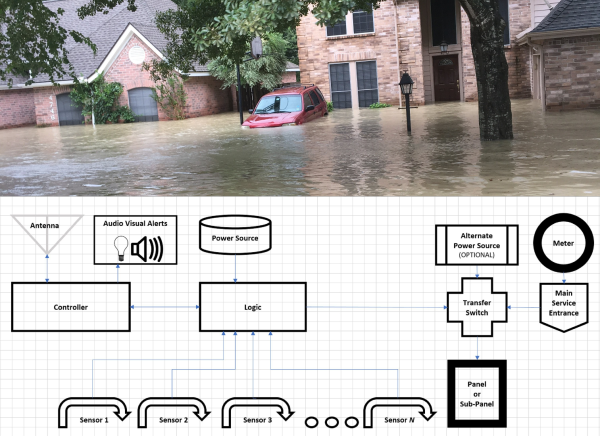When all else fails, blame it on the cloud? It seems like that’s the script for just about every outage that makes the news lately, like the Wyze camera outage this week that kept people from seeing feeds from their cameras for several hours. The outage went so far that some users’ cameras weren’t even showing up in the Wyze app, and there were even reports that some people were seeing thumbnails for cameras they don’t own. That’s troubling, of course, and Wyze seems to have taken action on that quickly by disabling a tab on the app that would potentially have let people tap into camera feeds they had no business seeing. Still, it looks like curiosity got the better of some users, with 1,500 tapping through when notified of motion events and seeing other people walking around inside unknown houses. The problem was resolved quickly, with blame laid on an “AWS partner” even though there were no known AWS issues at the time of the outage. We’ve said it before and we’ll say it again: security cameras, especially mission-critical ones, have no business being connected with anything but Ethernet or coax, and exposing them to the cloud is a really, really bad idea.
flood6 Articles
Austere Engineering Hack Chat
Join us on Wednesday, January 22 at noon Pacific for the Austere Engineering Hack Chat with Laurel Cummings!
For most of us, building whatever it is that needs building is something that occurs in relative comfort and abundance. Sure, there are cold workshops and understocked parts bins to deal with, but by and large, we’re all working in more or less controlled environments where we can easily get to the tools and materials we need to complete the job.
 But not all engineering is done under such controlled conditions. Field operations often occur miles from civilization, and if whatever you need is not in the back of the truck, it might as well not exist. At times like this, the pressure is on to adapt, improvise, and overcome to get the job done, especially if people’s lives and well-being are at stake.
But not all engineering is done under such controlled conditions. Field operations often occur miles from civilization, and if whatever you need is not in the back of the truck, it might as well not exist. At times like this, the pressure is on to adapt, improvise, and overcome to get the job done, especially if people’s lives and well-being are at stake.
All of this is familiar territory for Laurel Cummings, an electrical engineer and an associate at Building Momentum, a technology development and training concern based in Virginia. Her job is to get out in the field and work with the company’s mainly military and corporate clients and help them deal with the challenges of austere environments, including disaster response efforts.
From a North Carolina beach ravaged by Hurricane Florence to the deserts of Kuwait, Laurel has had to think her way out of more than a few sticky situations. Join us as we discuss what it takes to develop and deploy field-expedient solutions under less-than-ideal situations, learn how to know when good enough is good enough, and maybe even hear a few war stories too.
 Our Hack Chats are live community events in the Hackaday.io Hack Chat group messaging. This week we’ll be sitting down on Wednesday, January 22 at 12:00 PM Pacific time. If time zones have got you down, we have a handy time zone converter.
Our Hack Chats are live community events in the Hackaday.io Hack Chat group messaging. This week we’ll be sitting down on Wednesday, January 22 at 12:00 PM Pacific time. If time zones have got you down, we have a handy time zone converter.
Click that speech bubble to the right, and you’ll be taken directly to the Hack Chat group on Hackaday.io. You don’t have to wait until Wednesday; join whenever you want and you can see what the community is talking about.
Custom Machined Pump Keeps CNC Lubrication Under Control
Rub two pieces of metal against each other hard enough, and it won’t be long before they heat up sufficiently to cause problems. That’s especially true when one is a workpiece and one is a tool edge, and the problems that arise from failing to manage the heat produced by friction can cost you dearly.
The traditional way of dealing with this is by pumping heavy streams of liquid coolant at the workpiece, but while that works, it creates problems of its own. That’s where minimum quantity lubrication comes in. MQL uses a fine mist of lubricant atomized in a stream of compressed air, which saves on lube and keeps swarf cleaner for easier recycling. The gear needed for MQL can be pricey though, so [brockard] decided to add homebrew MQL to his CNC router, with great results.
The video below shows the whole process, from raw metal to finished system – skip ahead to about 12 minutes if you just want to see final testing, but be warned that you’ll be missing some high-quality machining. The finished pump is a double-piston design, with each side driven by a cam rotated by a servo. An Arduino controls the speed of the motor based on the current settings; the pump is turned on and off through G-code control of a relay.
The lubricant stream is barely visible in the video, as opposed to the sloshing mess of traditional flood coolants, and seems much more suitable for a hobbyist-grade CNC setup. Need to build a CNC router before you build this? You can do much worse than this one.
Continue reading “Custom Machined Pump Keeps CNC Lubrication Under Control”
Flood Fault Circuit Interrupter Could Save Lives
What if you didn’t have to risk your life to disconnect the power during a catastrophic storm? That’s a question many people in Houston were asking themselves as they watched water from Hurricane Harvey and other storms surge through the streets, swell in the gutters, and flood their homes.
 Among these Houstonians were engineering students [Jon] and [Cyrus Jyan]. They watched as homeowners fought to safely disconnect their homes from the power grid and said, it shouldn’t have to be this way. They designed the Flood Fault Circuit Interrupter to monitor target areas and disconnect the power automatically when a credible threat is detected.
Among these Houstonians were engineering students [Jon] and [Cyrus Jyan]. They watched as homeowners fought to safely disconnect their homes from the power grid and said, it shouldn’t have to be this way. They designed the Flood Fault Circuit Interrupter to monitor target areas and disconnect the power automatically when a credible threat is detected.
The FFCI is built on top of existing protection schemes like GFCIs and Arc Fault Circuit Interrupters. It isn’t meant to replace them, but instead tie them together and turn them off based on input from float switches.
As floodwaters rise, an EEPROM does a lookup and compare to decide if the threat is enough to shut it down. If so, an alarm signal to a shunt trip breaker can either throw the whole system to OFF, or else switch over to an alternate power source. The system is built around a standard security panel and keypad interface that supports 12 V alarm output. We particularly like the float switch enclosures that allow water to enter while keeping out debris.
Honey, When Did We Get An Indoor Pool?
Is it too much to ask for a home to have a little ‘smart’ built-in? If you’ve ever woken up (or come home) to your dwelling being flooded, you’ll know how terrible it feels, how long it can take to recover from, and how stressful it can be. Yeah, it’s happened to us before, so we really feel for [David Schneider]. He woke up one Sunday morning to a whole lot of water in his house. The inlet valve for his washing machine somehow got stuck in the open position after putting a load of laundry in the previous night.
[David] took progressively complex measures to prevent a broken water feed flood from happening in the future. First, he lined the entire floor of his laundry closet with a steel tray. OK, that’s a good start but won’t prevent another disaster unless it is caught very quickly. How about a simple audible water alarm? That’s good and all if you’re home, but what if you’re not?
Next, he installed a valve with a mechanical timer on the water line for the washing machine which closes automatically after 2 hours of being opened. Much better, but what about all the other thirsty appliances around the house? After searching online a little, he found plenty of whole house systems that would work for him, but there were 2 problems with these. First, most were network-based and he didn’t want to IoT-ify his house’s water system. Second, they were overpriced.
Of course the solution was to put together his own system! First, he purchased a few mostly inexpensive things — a wireless alarm, some water sensors, and a motorized ball valve. Then he collected the last few things he needed from what he had on hand around the house, and got to work connecting the 4 LEDs on the alarm to 4 analog input pins on his Arduino. Next, he added a relay between the Arduino and the motorized ball valve.
If a sensor detects water, it tells the alarm about it (wirelessly), which triggers the Arduino to energize a relay that is connected to the motorized ball valve, causing it to shut off the main water line for the entire house. Disaster averted! Sure, it’s a fairly simple hack, but it works, meets his requirements, and now he sleeps better at night knowing he won’t wake up (or come home) to an indoor swimming pool.
It’s surprising that we haven’t seen more hacks like this given it’s such a common problem. The closest thing we can remember is an overflow sensor for an aquarium. If homes came standard with a water main shutoff system, it would remove a stressful event from our lives and maybe even lower our insurance premium.
Thailand Residents Use Hacks To Make The Best Of A Horrible Situation

Thailand is dealing with horrible flooding right now. Despite the hardship, people still need to get around and go on with life so many have come up with clever hacks to make this disaster more manageable. [Jan] wrote in to let us know about this collection of flood-related hacks which he’s put together. They are wide-ranging, and many brought a smile to our faces, starting this the plastic-bag enclosed cars (not pictured).
We pulled out three of them to highlight above. On the top left is a canine life vest fashioned out of empty drinking bottles mounted on some type of harness. We hope the pets can stay out of the flood waters but this is a nice precaution. Speaking of precautions, the rubber-ducky to the right of that image is an electrical hazard detector. Float it in the water and an alarm and LED will go off if AC current is detected. Finally, the image on the bottom shows a bridge constructed in front of a shopping center by turning carts on their backs and lining the pathway with wooden pallets.
There are several floating and amphibious vehicle hacks in the collection. So far we haven’t seen any drill-powered trolling motors though.



















